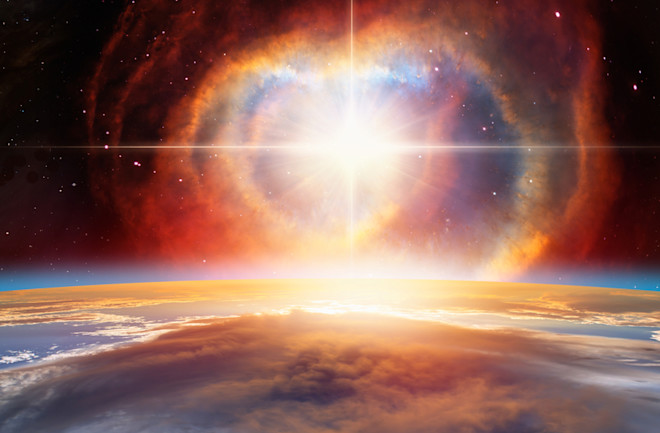Stars are among the most identifiable objects in the sky. They light up the darkness and dot the galaxy. Stars are born within a dusty cloud and eventually form a mass of gas and chemicals that burns brightly in the sky. But ultimately, all stars, no matter how big and bright, must also die.
How Long Do Stars Live?
The sun, for example, is a 4.5 billion-year-old star that will continue its lifespan for another 10 billion years. The sun lights up through a combination of hydrogen and helium in a reaction called fusion. At some point, the sun will use up all the hydrogen in its core and begin to burn out.
A Star Must Die
According to NASA, the sun will no longer have enough heat to support it against gravity, and as a result, it turns into a fiery red ball burning from above that will eventually consume the Earth. According to NASA, "the atmosphere [of the sun] will envelope the Earth, and our planet will be consumed in a fiery death."
Read More: How Will Life on Earth End?
The sun's collapse happens over billions of years, but it's no less dramatic. Once gravity causes a star to collapse on itself, it will take another 100 million years for a star to deflate and form a persistent red cloud. Eventually, around 10 million years later, all that is left is a hot core of carbon and gasses that form a "planetary nebula." As the star further burns out, it will diminish into a white dwarf planet.
What Happens When a Star Dies?
But while the sun may seem huge from our vantage point, it's considered a baby in terms of stars. And bigger stars go out with a bigger bang. The death of a larger star, for example, around 10 times as bright as the sun, results in a supernova explosion, the biggest explosion we humans have ever seen. And supernova explosions happen in a matter of seconds.
Supernova Star vs. Smaller Star Explosions
According to NASA, a supernova star is considered the "last hurrah of a dying star." The nuclear fuel burning at the core of a massively bright star causes so much heat, pressure and energy that the star isn't able to collapse like a smaller star because the intense pressure at its core is still fighting the gravity pushing inward.
Eventually, just like the smaller star, the fuel of a supernova star will run out and gravity will succeed in crushing the star's core. It happens so rapidly that it creates intense shock waves throughout the galaxy. It can even cause the formation of a black hole, the densest portion of the solar system when gravity is pulling so hard that even light isn't able to escape.
Read More: How Many Ways Can the Sun Kill Us?
Exploding Supernovas
In Nov. 2022, the Hubble Space Telescope captured a supernova explosion that happened 11 billion years ago, when the universe was a fifth of the age that it is today. The telescope could take images at different stages of the explosion, which showed it moving from hot to cold in a series of bright blue to red images that appeared before it burned out. This was the first time that we were able to witness the death of a massive star.
Supernova explosions aren't just important because they're the end of a dying star. They also create the perfect breeding ground for future stars. Without them, space would have no other carbon or oxygen, the elements that make life on Earth possible. Stars live, and then they die, but in that time in between, they magically light up the skies above.
Read More: Sun-Like Star Discovered Orbiting Black Hole
